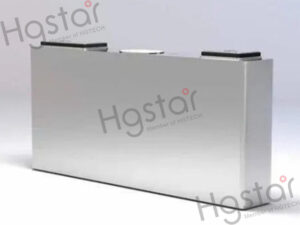At the moment, the two key possibilities for the application of battery technology are power batteries and energy storage batteries. Power batteries belong to new energy vehicles, while energy storage batteries correspond to solar energy and other equipment.
Power battery packing is divided into three types: cylindrical, square, and soft packs. The soft pack battery has traditionally been the industry’s top option for mobile devices, but it is also desired by car makers in automotive applications because to its volume controllability, particularly for plug-in hybrid automobiles. When it comes to weight and volume, the soft pack battery has a clear benefit.

Laser has become the copper-aluminum welding of power batteries, and the only technology that can weld electroplated nickel to copper materials, due to its advantages of focused energy, high welding efficiency, high processing precision, and big weld seam aspect ratio. A wise choice of welding methods and procedures will have a direct impact on the cost, quality, safety, and uniformity of batteries.
Pouch battery dissimilar material welding
It primarily involves the series connection of positive and negative lugs, the welding of positive and negative lugs and copper busbars, and the welding of multi-layer anode aluminum and copper busbars for the welding of dissimilar materials of soft pack batteries. Copper tabs are typically 0.2-0.5mm thick, while aluminum tabs are typically 0.2-0.6mm thick.
The most difficult aspect of laser welding copper-aluminum alloys for soft pack batteries
Because of the enormous difference in melting points, copper and aluminum are indefinitely soluble in each other in liquid form but have limited mutual solubility in solid form, and can produce a range of solid solution phases based on intermetallic compounds. As a result, when welding, attempt to use a light source with acceptable beam quality and minimize heat input. By reducing the amount of time copper comes in contact with liquid aluminum, the creation of two intermetallic compounds is reduced, boosting the strength of the welded junction.
Difficulties of Laser Welding Process
High reflection/thermal conductivity material necessitates a high laser power density, high welding reflectivity, and stringent laser stability and reliability criteria.
Materials with a high carbon content – when the carbon content is greater than 0.77 percent, cracks are easily formed in the center of the weld and the heat affected zone due to the laser’s fast cooling and fast heating characteristics; materials containing low boiling point elements – such as materials containing Mg, Zn, and other elements When the ionization energy of such materials is low, a substantial quantity of evaporation happens during the laser welding process, and it even continues to absorb capacity and become plasma, changing the microstructure type and chemical composition of the weld and severely reducing weld performance.






